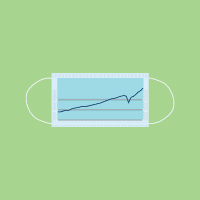In recent years, household finances have fluctuated amid large swings in federal income support and the stock market, a surge in inflation, and strong consumer spending. As documented by The Hamilton Project, household balance sheets at the end of 2021 were stronger than would have been expected before the pandemic. However, this Economic Analysis explains how household balance sheets have deteriorated in some respects since then. Moreover, an examination of household finances for different demographics (age, race and ethnicity, and income) shows that the deterioration in finances has been faster for nonwhite and lower income households. The current state of household finances does not support continued strong consumer spending, and leaves households at a crossroads if recent trends in finances continue: they can either moderate their spending or become more indebted.
Much has been made of the developments in household finances since 2020 relative to pre-pandemic trends, and indeed we explore some of that comparison here. In earlier work we found that real income through summer 2021 was well above its pre-pandemic trend; here we show that real income as of 2023 is well below its pre-pandemic trend.
Household wealth grew substantially in 2020 and 2021 as a result of reduced spending during the three-year COVID-19 pandemic (i.e., between the first quarter of 2020 and the first quarter of 2023), substantial income support from government transfers, and increases in asset values. But the extraordinary wealth that households accumulated in 2020 and 2021 had dissipated by the first quarter of 2023, largely as a result of stock market losses and low saving rates coupled with weak income growth. In addition, liquid wealth, meaning wealth held in checking and savings accounts, has fallen substantially since 2021. Nonetheless, relative to 2019, households have more wealth, and the burden of household debt is within recent historical experience in the aggregate.
Even so, the trends of strong spending that we see bear watching. If trends in real income and wealth remain roughly unchanged, households would have to moderate the pace of consumer spending to maintain healthy balance sheets. But if households were to sustain their current spending trends and increasingly finance spending with borrowing, financial health could deteriorate in a worrying way.
In addition to providing an update of the current state of household finances, this piece also compares these recent developments to what happened in the business cycles that started in 1960, 1969, 1973, 1981, 1990, 2001, and 2007. Comparison to prior business cycles highlights the differences between typical dynamics and the possibly one-time effects of COVID and the attendant fiscal policy. Indeed, separating these out has been core to the work of The Hamilton Project for the past several years. We show that, at this point in the cycle, the increases in household wealth and, in particular, liquid wealth are within the range of historical experience and thus should not be providing an unusually large boost to consumer spending. That fact, coupled with unusually weak growth in real income, suggests that spending will have to moderate going forward.



